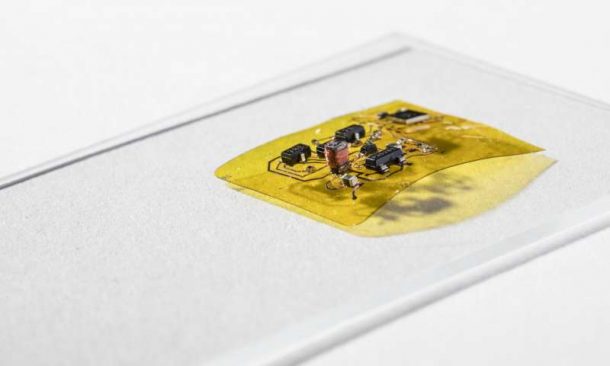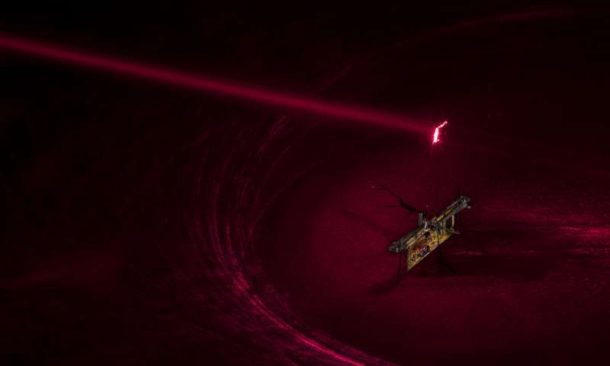Small insect-sized robots can help a lot with time-consuming tasks like surveying crops grown on huge farms or sniffing out leaked gas. These robots can fly using their wings and are too small to use propellers. Small size has various advantages since these robots are cheap to produce and can easily go into the tight places where large drones cannot go. However, current flying robotic insects are still moving on the ground. The electronics and the power system that they need to fly is still too heavy for these robots to carry.
Engineers at the University of Washington have for the first time, added a brain to these robotic insects and allowed their RoboFly to take independent flights. This is a huge leap for the robot-kind. The team is expected to present its findings on 23rd May at the International Conference on Robotics and Automation in Brisbane, Australia. RoboFly is a little heavier than a toothpick and is powered by a laser beam. It uses a small onboard circuit which converts the laser energy into electricity which operates the wings of the robotic insect. Sawyer Fuller, an assistant professor in the UW Department of Mechanical Engineering said, “Before now, the concept of wireless insect-sized flying robots was science fiction. Would we ever be able to make them work without needing a wire? Our new wireless RoboFly shows they’re much closer to real life.”

The main challenge here is flapping. Wing flapping is a power-consuming process and both the power source and the controller which directs the wings are too big and bulky to be attached to the tiny body of the insect. As a result, the RoboBee had a leash on it and it received power and control from the wires which were on the ground. However, a flying robot should be able to fly on its own. So the team of researchers decided to use a narrow invisible laser beam to power up their robot. They pointed the laser beam at a photovoltaic cell which is attached above the RoboFly and converts the laser light into electricity. Shyam Gollakota, co-author of the study said, “It was the most efficient way to quickly transmit a lot of power to RoboFly without adding much weight.”

The laser alone is not capable of providing enough voltage to move the wings. The team designed a circuit which boosted the seven volts which were coming out of the photovoltaic cell up to 240 volts, required for the flight. Vikram Iyer, co-author and a doctoral student said, “The microcontroller acts like a real fly’s brain telling wing muscles when to fire. On RoboFly, it tells the wings things like ‘flap hard now’ or ‘don’t flap.” More specifically, the controller sends voltage in the form of waves which makes the fluttering just like a real insect’s wings. Johannes James, the lead author, and a mechanical engineering doctoral student said, “It uses pulses to shape the wave. To make the wings flap forward swiftly, it sends a series of pulses in rapid succession and then slows the pulsing down as you get near the top of the wave. And then it does this in reverse to make the wings flap smoothly in the other direction.”
The RoboFly can take off and land for now. When the photovoltaic cell is not in the direct line of sight of the laser, the robot runs out of power and lands. However, the team is hoping to steer the laser soon so that the RoboFly can hover and fly around. The team might also use tiny batteries in the future or use ways to harvest energy from radio frequency signals. This way the power source might also get modified for specific tasks. In the future, the RoboFly can be more advanced with enhanced brain and sensor system which helps the robots to navigate and complete the tasks on their own, Fuller said, “I’d really like to make one that finds methane leaks. You could buy a suitcase full of them, open it up, and they would fly around your building looking for plumes of gas coming out of leaky pipes. If these robots can make it easy to find leaks, they will be much more likely to be patched up, which will reduce greenhouse emissions. This is inspired by real flies, which are really good at flying around looking for smelly things. So we think this is a good application for our RoboFly.”


